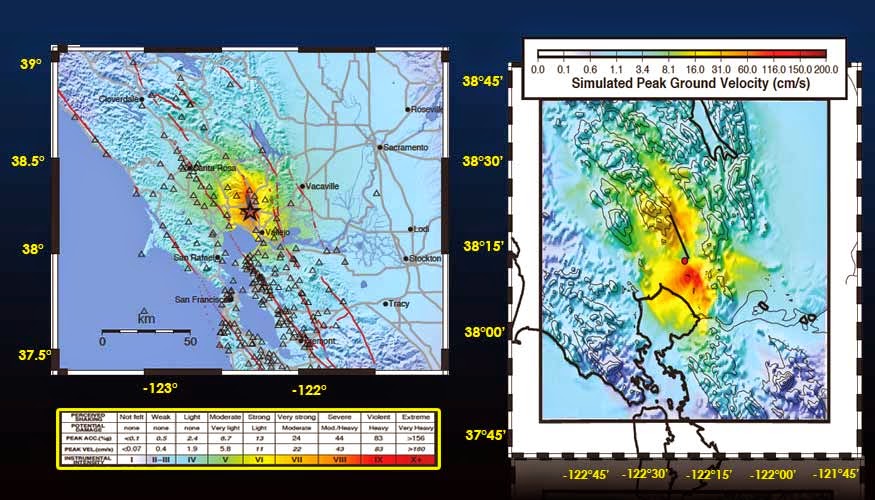
Lawrence Livermore seismologist Artie Rodgers is tapping into LLNL’s supercomputers to simulate the detailed ground motion of last month’s magnitude 6.0 south Napa earthquake.
The Napa tremor is the largest to hit the Bay Area since the magnitude 6.9 Loma Prieta event in 1989.
Using descriptions of the earthquake source from Professor Douglas Dreger of the University of California Berkeley Seismological Laboratory, Rodgers is determining how the details of the rupture process and 3D geologic structure, including the surface topography, may have impacted the ground motion. The earthquake ruptures from its epicenter south to north, directing energy toward Napa.
Seismic simulations allow scientists to better understand the distribution of shaking and damage that can accompany earthquakes, including possible future “scenario” earthquakes. The simulations are only as valid as the elements going into the simulations, such as the source and subsurface models. Thus the recent earthquake provides data to validate methods and models. Simulations are performed with the LLNL-developed SW4 code by Anders Petersson and Bjorn Sjogreen of the Lab’s Computation Directorate.
Dreger developed a model of the earthquake source based on the recorded ground motions. Rodgers is combining that source model with a 3D subsurface model developed by the U.S. Geological Survey (Menlo Park) to simulate the observed motions.
“This earthquake will help us improve the 3D model to better fit the observed seismic motions, especially at higher frequencies than previously possible” Rodgers said.
Compared to the Loma Prieta quake, the current seismic instruments have vastly improved and provide better spatial sampling of the source and geological structure.
Damage occurred more in the sedimentary basins such as the Napa and Sonoma valleys and San Pablo Basin because they are made of weaker rock. Mountain regions close by felt less shaking because they are composed of harder rock.
The half meter slip on a 12-kilometer segment of the West Napa fault was not the most likely place for a large earthquake to occur in the Bay Area. “It’s a bit of a surprise at this site, though there was a magnitude 6.3 possibly on this fault back in 1893,” Rodgers said. The northward direction of the rupture is well established, but details of the spatial and temporal evolution of the rupture remain to be discovered.
Most experts expect the Hayward-Rodgers Creek Fault system will be the next major Bay Area earthquake. In fact, there is a 30 percent chance that the Hayward/Rodgers Creek fault will rupture with a 6.7 magnitude or greater quake in the next 30 years, an event that would significantly affect the greater Bay Area. However, an event on the Greenville fault, which ruptured in January 1980, could be more damaging to the Tri Valley.
For now, Rodgers is focusing on the Napa event with colleagues at LLNL, UC Berkeley and the USGS. He said the current simulation capabilities far exceed what existed in 1989, allowing his team to perform higher resolution numerical experiments more easily and quickly.
“Also, we now have more high quality and rapidly available data as well as automated results to inform the public of details when an earthquake happens,” he said. “We’re getting information in a couple of minutes or hours rather than a couple of days.”
Rodgers said the prototype Earthquake Early Warning system operated by UC Berkeley provided an alert five seconds before the strong shaking arrived in Berkeley. This system worked well but could provide more warning by densifying and upgrading the region’s seismic network. LLNL and its employees could benefit from subscribing to this test system and expanding network coverage, especially near the Greenville fault.
Note : Note : The above story is based on materials provided by Lawrence Livermore National Laboratory










